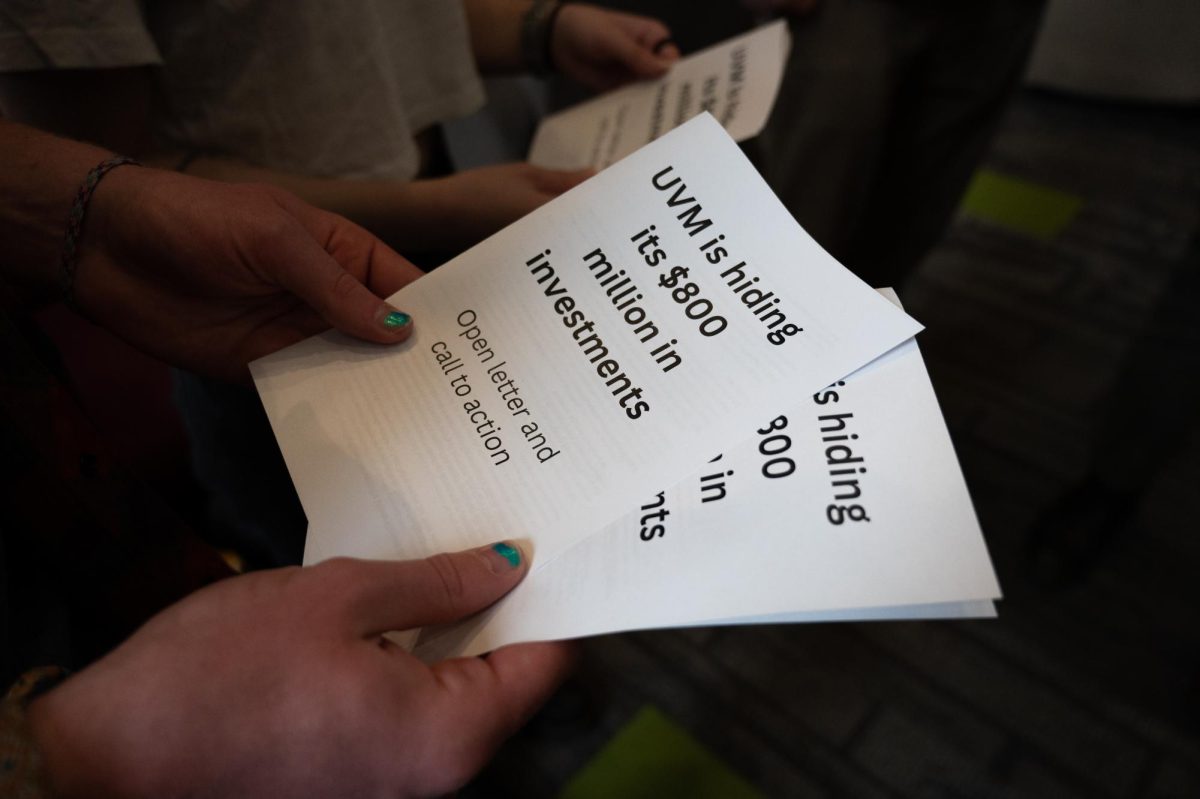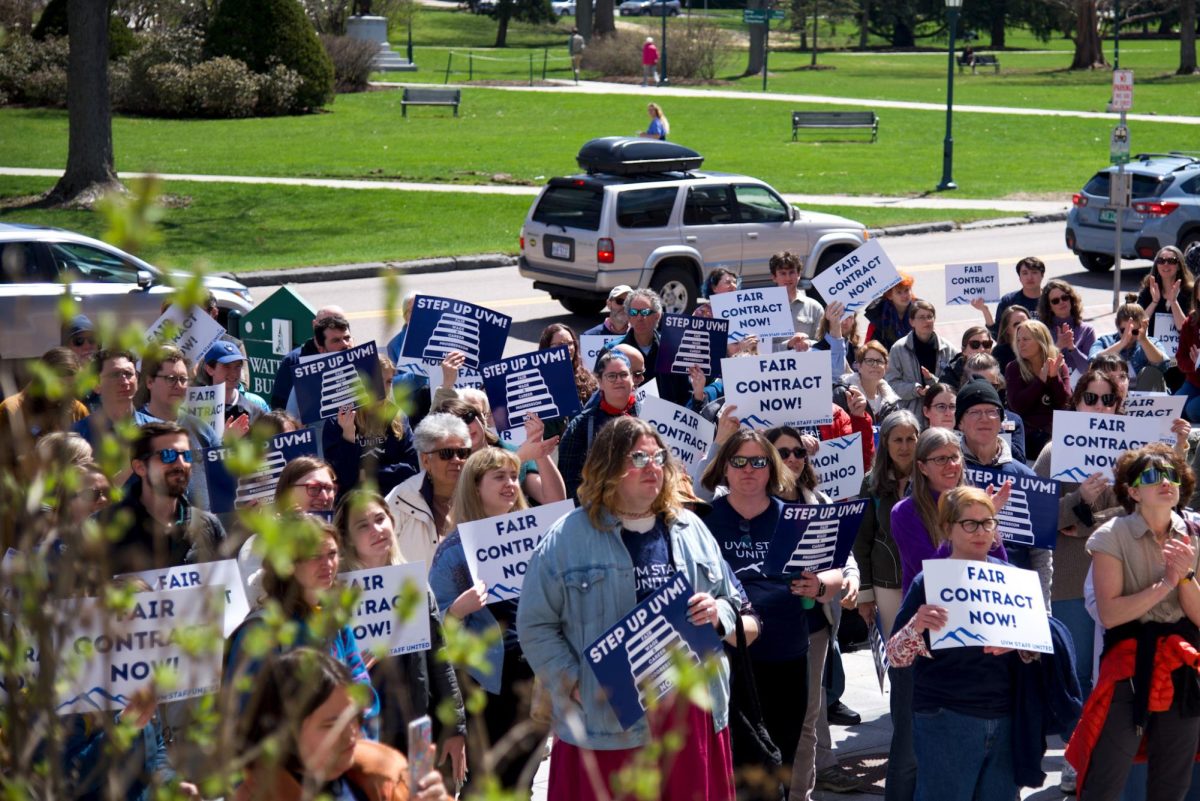Monday, March third, Billings cafeteria is packed with students eating lunch, talking, and laughing. These students have no idea that in fifteen minutes the Students for Peace and Global Justice will stage a “Die-In”–a peaceful protest where students, dressed in black, will fall down and pretend to die.
It’s supposed to increase people’s awareness of the consequences of war. It’s supposed to be shocking. It’s supposed to be sad. It’s supposed to educate people in a way they normally wouldn’t be educated.
At noon a student walks into the room dressed in black. He sets a green canvas bag down at a table in the corner, visually sweeps the room, and strides back out the entrance leaving his bag at the empty table.
Three more students dressed in black walk into the cafeteria. One of them drops a stack of anti-war protest flyers onto a table in the center of the room.
Seven more students clad in black, heads held high, walk into the room. Students wearing black bandanas, black sweatshirts, and black jeans begin walking around the large dining hall, awaiting their signal.
Students look up from their lunches. Conversation lowers. Senior David Hicks enters the room wearing a black hat–a thick piece of duct tape covering the logo. Underneath a green fleece he’s wearing a black hooded sweatshirt, WAR=DEATH scrawled across the back in silver tape.
He sits at a table and looks out at the nervous crowd with piercing blue eyes. “These people are getting pretty sketched out.” He laughs, “They probably think we’re a bunch of anarchists.”
The protesters spread around the cafeteria. At 12:15 a trumpet sounds. The protesters crumble to the ground. Some fall in piles. Some fall across tables. People eating lunch drop their forks and shove their chairs back. They stare at the bodies lying in front of them.
One guy falls in the line at the register. Two shocked students get down on their knees and shake him, “Are you okay?”
The cashier responds, “It’s okay honey; he’s dying. He’s protesting the war.”
Over fifteen students lie motionless in the Billings cafeteria, dressed in black, with their heads to the floor. Senior Keith Rosenthal stands up on a chair. “These people do not have to die. And they will not die in our name.”
Keith Rosenthal speaks for only a minute, but during his entire speech students from the back shout, “Shut up!” and “Sit down!” and “Take a shower!” About ten students grab their lunches and walk out; most people in the room are silent.
Rosenthal steps down. Many students cheer. The “dead” get up and everybody in the room starts talking at once. A young cameraman, dressed in black, approaches one of the students who had yelled out against Rosenthal’s speech. The outraged student screams at him, “Get that camera out of my face or I’ll f***ing punch you in the face!”
David Hicks walks up to the cameraman and the student and says, “This is a public place. We have the right to protest here.”
The student snaps, “What you’re doing in disrespectful. For the safety of our country, our people are putting their lives on the line.
One day you guys will understand that you live in the best country in the world.” His hands are shaking; his face is red. Hicks takes a deep breath to respond.
The guy doesn’t give him a chance. He turns his back to him, sinks into his chair and puts his head in his hands.
















